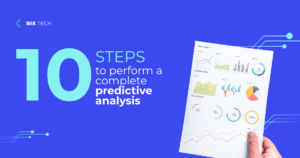Unlocking Lightning-Fast Analytics: Optimizing Query Performance with Columnar Storage and Vectorized Execution

Sales Development Representative and excited about connecting people
In today’s data-driven world, slow queries are more than an inconvenience—they’re a barrier to real-time insights and business agility. As organizations amass ever-larger datasets, traditional row-based databases can struggle to keep up with the demands of modern analytics. Fortunately, two advanced database technologies—columnar storage and vectorized execution—are reshaping the way we process and analyze data, delivering dramatic improvements in query performance.
But what exactly are these technologies, how do they work, and why should your business care? Let’s explore how columnar storage and vectorized execution can turbocharge your analytics and help you gain a competitive edge.
The Challenge: Traditional Row-Based Databases and Modern Analytics
Most legacy databases use row-oriented storage. In this format, the data for each row is stored together on disk. While row storage is efficient for transaction-heavy workloads (think order entry or updating customer records), it’s far from ideal for analytical queries that scan large amounts of data but only need a handful of columns.
Imagine a report that calculates the average transaction value for the last year. In a row-based system, the database must load every row—even the columns you don’t need—resulting in unnecessary I/O and sluggish performance.
As organizations demand faster insights from ever-growing datasets, a new approach is needed.
Columnar Storage: The Foundation for Query Acceleration
Columnar storage flips the traditional model on its head. Instead of storing data one row at a time, it stores each column’s data together. This simple change has profound effects on performance, especially for analytics.
How Columnar Storage Works
Picture a table with columns for Customer ID, Date, Product, and Amount. In a column-oriented database, all Customer IDs are stored together, all Dates together, and so on. This structure means that when your analytics query requests only the Amount column, the database can read just that column—ignoring everything else.
Key Benefits of Columnar Storage
- Improved I/O Efficiency: Only the relevant columns are read from disk, drastically reducing data movement.
- Superior Compression: Similar data types stored together compress much better, saving space and further speeding up reads.
- Faster Aggregations: Operations like SUM, AVG, or COUNT can be performed more efficiently since the database can process entire columns in bulk.
Cloud-native columnar databases like Amazon Redshift, Google BigQuery, and ClickHouse have popularized this approach, enabling organizations to run analytics at scale.
Vectorized Execution: Taking Performance to the Next Level
While columnar storage lays the groundwork for faster analytics, vectorized execution is the secret weapon that makes query engines truly fly.
What Is Vectorized Execution?
Traditional query engines process data row by row. Vectorized execution, however, processes data in batches—often hundreds or thousands of values at a time—using CPU-friendly vector instructions. Think of it as upgrading from a bicycle to a bullet train.
Why Vectorized Execution Matters
- Efficient CPU Utilization: Modern CPUs are designed to perform the same operation on multiple data points simultaneously (SIMD—Single Instruction, Multiple Data). Vectorized execution leverages this, maximizing throughput.
- Reduced Interpretation Overhead: By processing data in blocks, the engine minimizes the overhead of function calls and branching, which can slow down row-at-a-time execution.
- Enhanced Parallelism: Combined with columnar storage, vectorized execution allows for highly parallel processing of analytical queries—a must for today’s big data workloads.
For a deeper dive into how AI and modern data architectures are revolutionizing business analytics, check out Data Science: The Business Revolution.
Real-World Example: How These Technologies Work Together
Let’s say your business wants to analyze billions of sales transactions to uncover seasonal trends. With a traditional row-based database, your query might take minutes—or even hours—to complete.
With columnar storage, the database reads only the relevant columns (such as Date and Amount), skipping over everything else. Then, using vectorized execution, the database processes massive blocks of data in parallel, performing aggregations and filters at lightning speed.
The result? Insights delivered in seconds, not hours. This unlocks possibilities for interactive dashboards, real-time decision-making, and agile business strategies.
Practical Tips: Making the Most of Columnar Storage and Vectorized Execution
Ready to harness these technologies? Here are some actionable steps:
Choose the Right Database
Opt for a database engine designed for analytics, such as Apache Parquet, Apache Arrow, Amazon Redshift, Snowflake, or ClickHouse. These platforms are built on columnar storage and often feature vectorized query engines.
Design with Analytics in Mind
- Optimize Table Schemas: Store data in wide tables, but be mindful of query patterns. Only include columns you frequently analyze.
- Leverage Compression: Enable compression options available in your database to further boost performance and lower storage costs.
Monitor and Tune
- Profile Your Queries: Use built-in tools to analyze query plans and identify bottlenecks.
- Partition Data Smartly: Partitioning on commonly-filtered columns (like date) helps the engine skip unnecessary data.
For more on building a robust analytics foundation, you might find value in Mastering Business Intelligence: A Beginner’s Guide.
The Future: AI, Analytics, and Beyond
Columnar storage and vectorized execution are not just technical buzzwords—they’re the keys to unlocking faster, smarter analytics. As data volumes continue to grow and real-time insights become the norm, these technologies will only become more essential.
Forward-thinking organizations are already leveraging this new paradigm to stay ahead of the competition, streamline operations, and drive innovation.
Final Thoughts
If your business relies on rapid analytics and data-driven decisions, embracing columnar storage and vectorized execution is no longer optional—it’s a strategic imperative. These technologies work hand in hand to minimize latency, maximize efficiency, and unlock the full potential of your data.
Curious about the next frontier in analytics and AI? Discover how advanced database technologies are shaping the future in Big Data and AI Trends in Business for 2024.
Ready to supercharge your analytics? The time to act is now.









